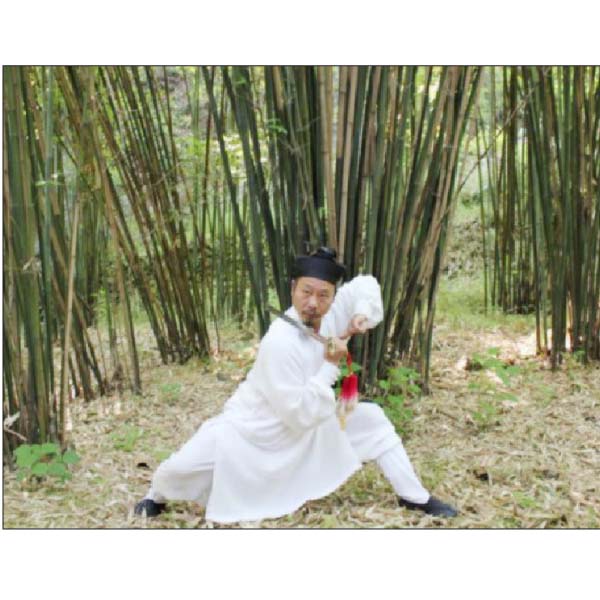Wudang and Shaolin are the best-known forms of Chinese kungfu.
While Shaolin is superior in boxing techniques, Wudang excels in swordsmanship, which combines both hard and soft moves that change according to the reactions of the challengers.
Traditional Chinese kungfu lost its practical value in the past century. However, Wudang is trying to bring the tradition into modern days.
Zhong Yunlong, born in 1964, is 14th generation of the Wudang Sanfeng Sect. He exchanged kungfu arts with other sects on behalf of Wudang.
From the Purple Cloud Temple, the base of Wudang, Zhong dealt with challengers from other places.
The Taoist temple is on the famous Wudang Mountain in central China’s Hubei province.
The last person who challenged him was an Italian fighter some 23 years ago. Claiming to be the founder of martial arts in Europe, he was thrown to the ground and slightly injured.
Without an actual combat atmosphere, fighters cannot learn from each other, and Wudang gradually became a form of exercise for self-entertainment.
Zhong said Wudang used to have 11 branches, but now only has six.
Most of the more than 400 sects in Taoism kungfu were lost over time. Zhong said the reason for their disappearance was the strict rules of inheritance.
Also lost is the Wudang combat swordsmanship of bygone days. Today’s swords are made of iron and wobbly, making them fit only for performances or collection.
Zhong has collected various swords, all of which are unsatisfactory, expect one: a rusty sword made in the 1980s that has accompanied him until recently.
Wudang’s fame for traditional kungfu has brought in some 7.6 million visitors in 2016, earning revenues of RMB4.3 billion.
Zhong left the Purple Cloud Temple last year and he did not take his sword with him.
Categories
Wudang-style swordsmanship fading





